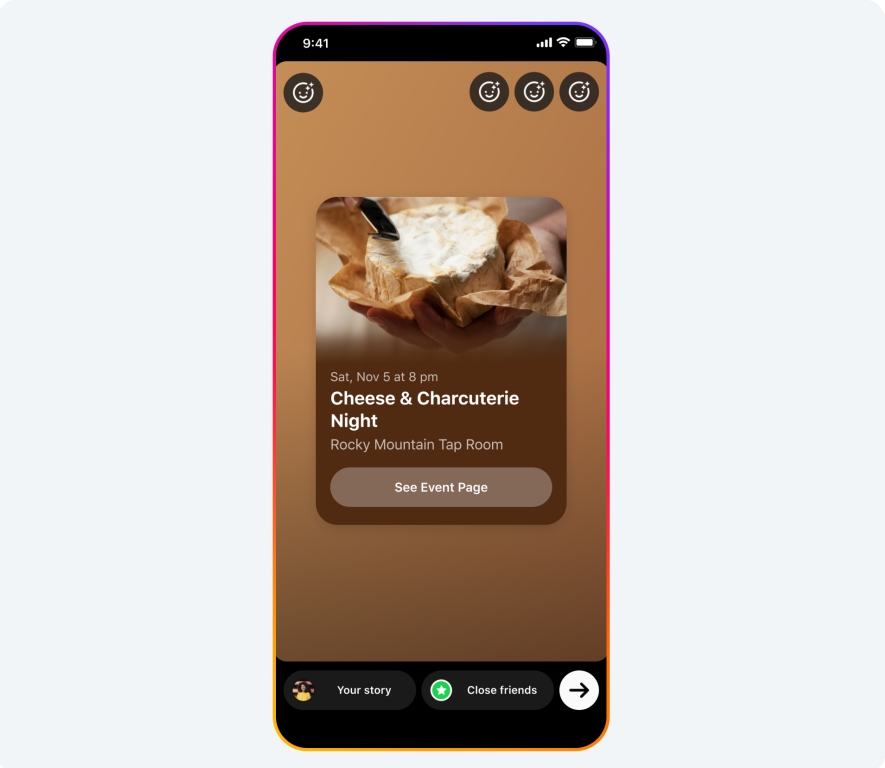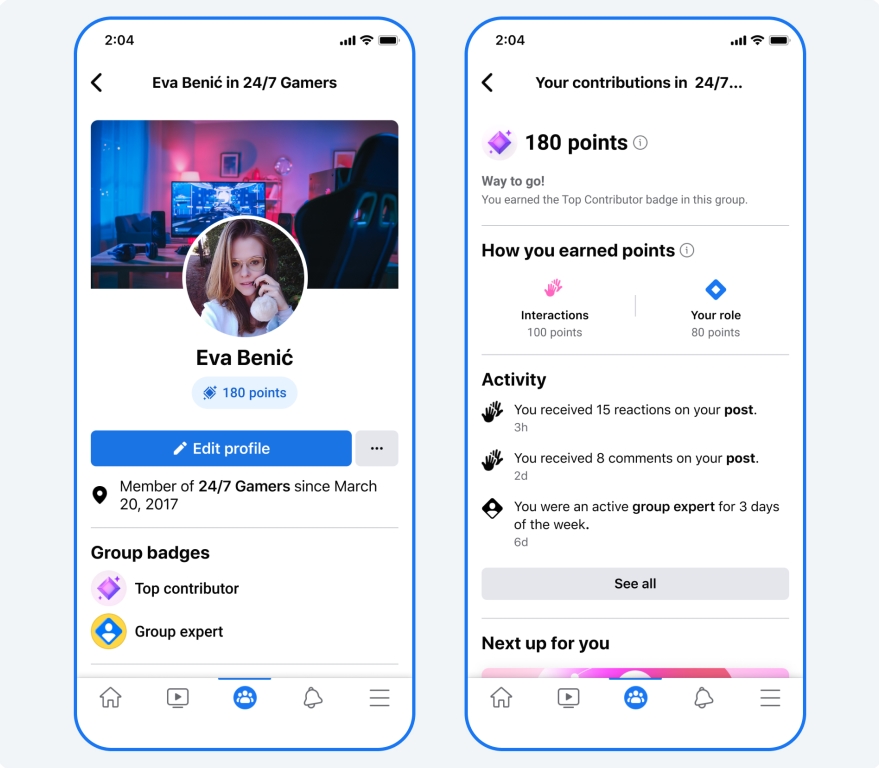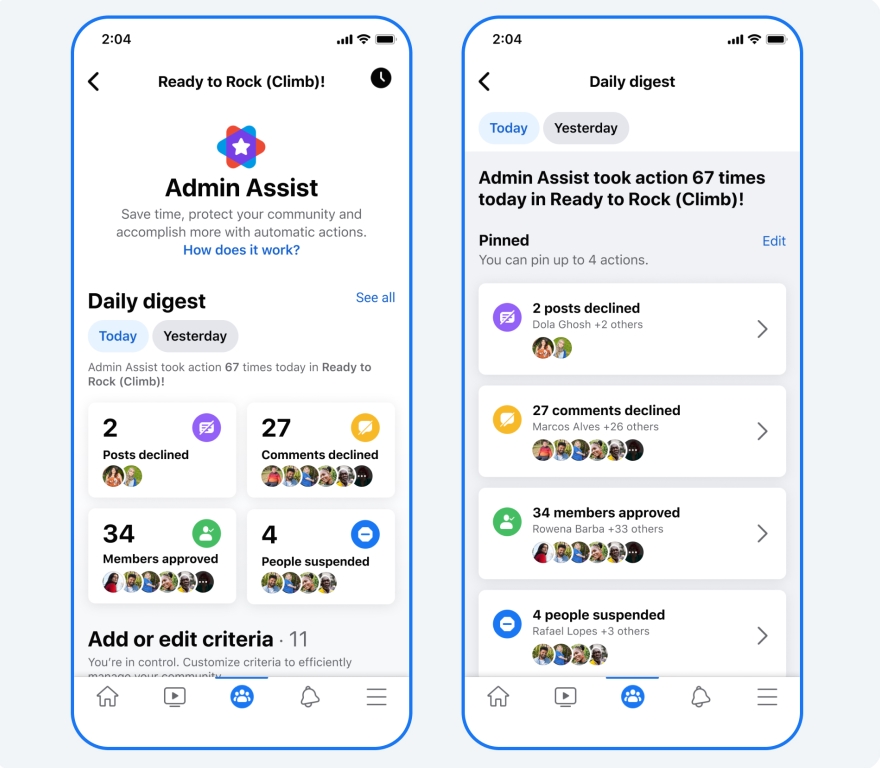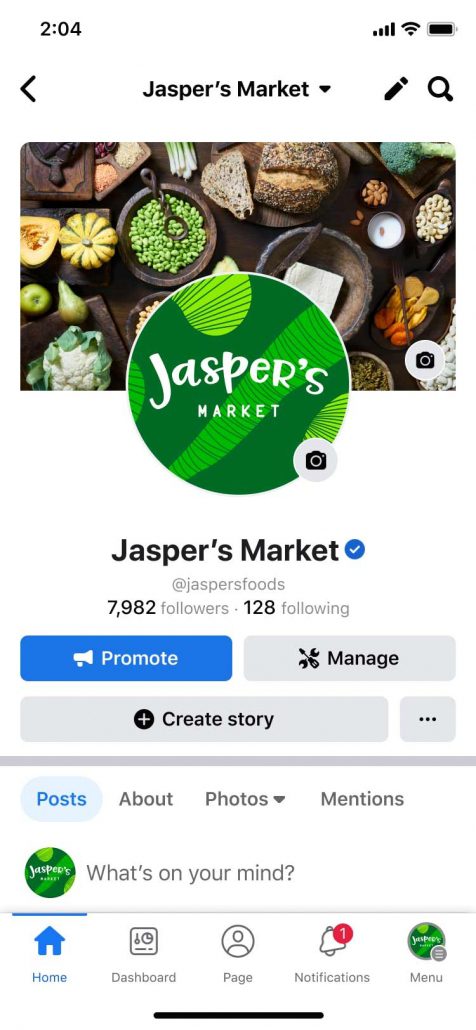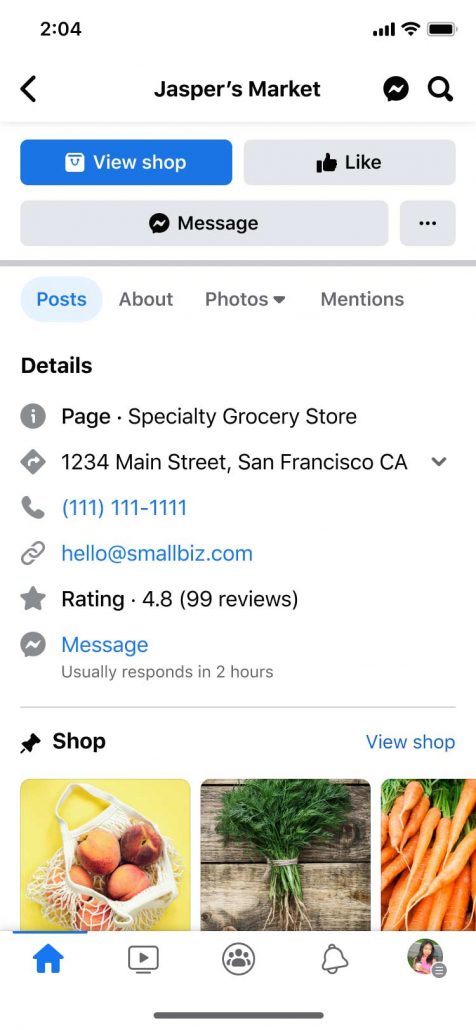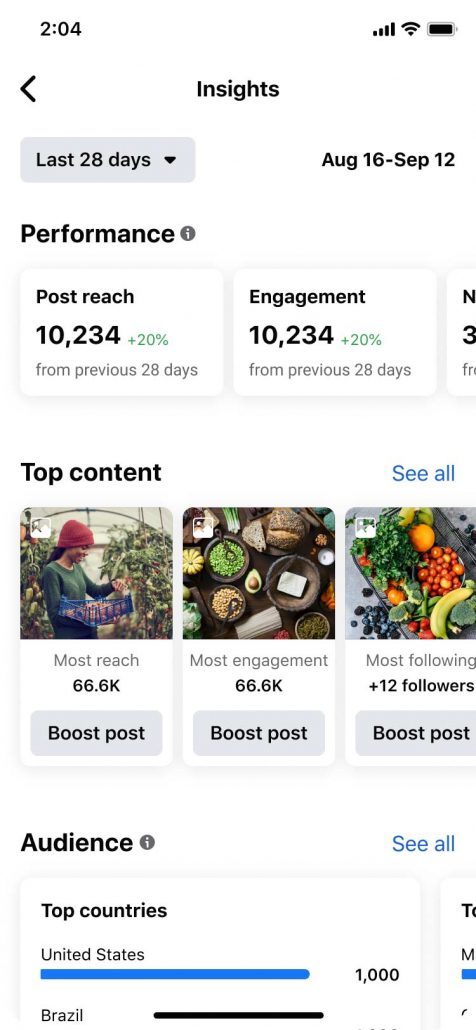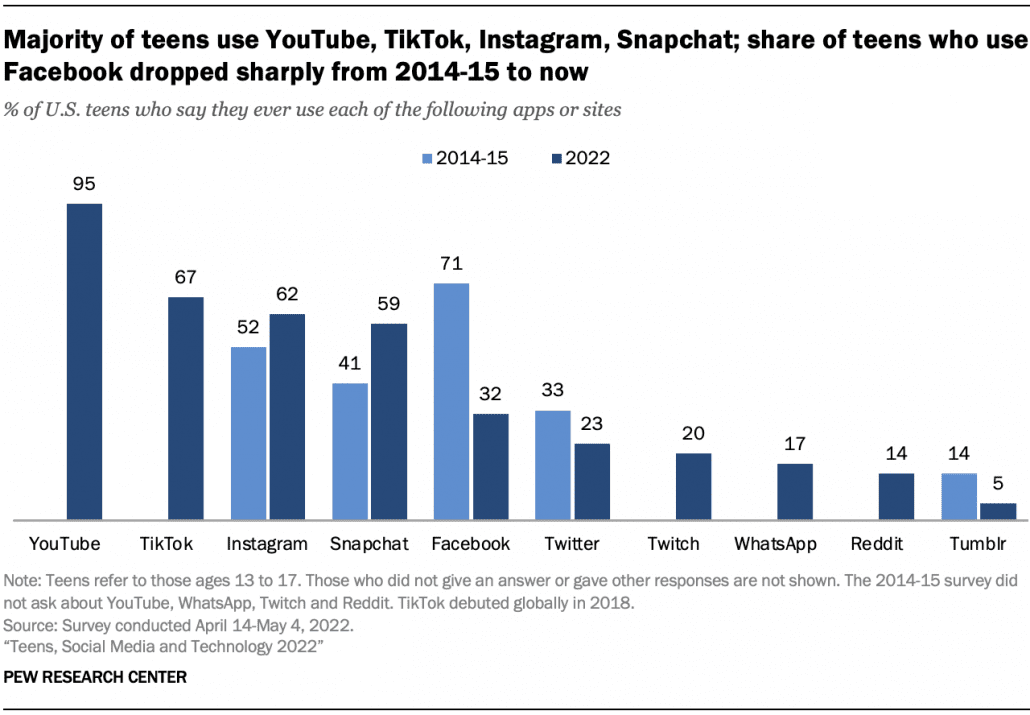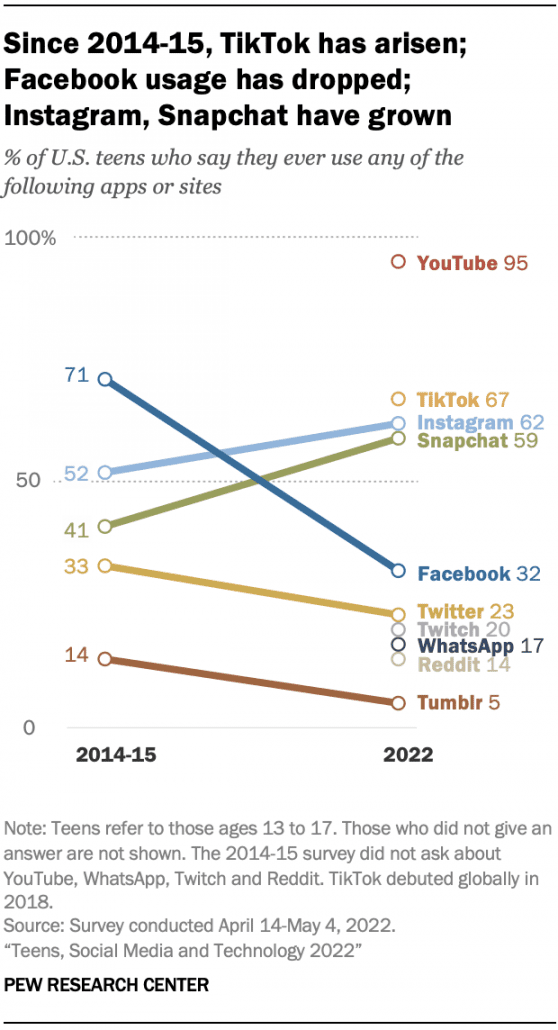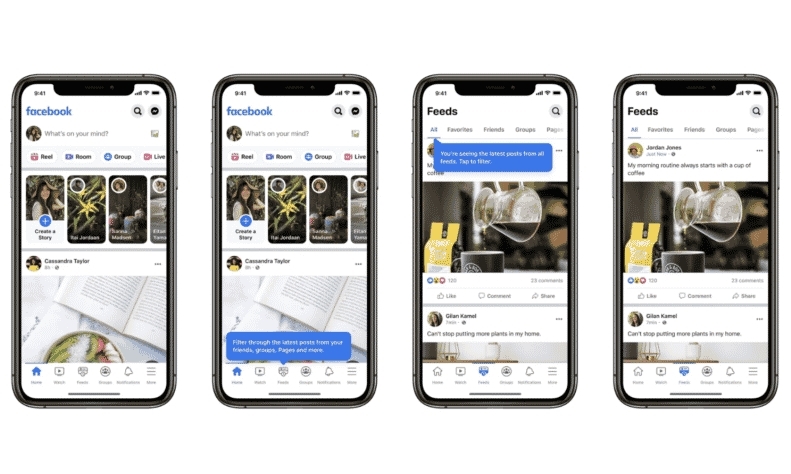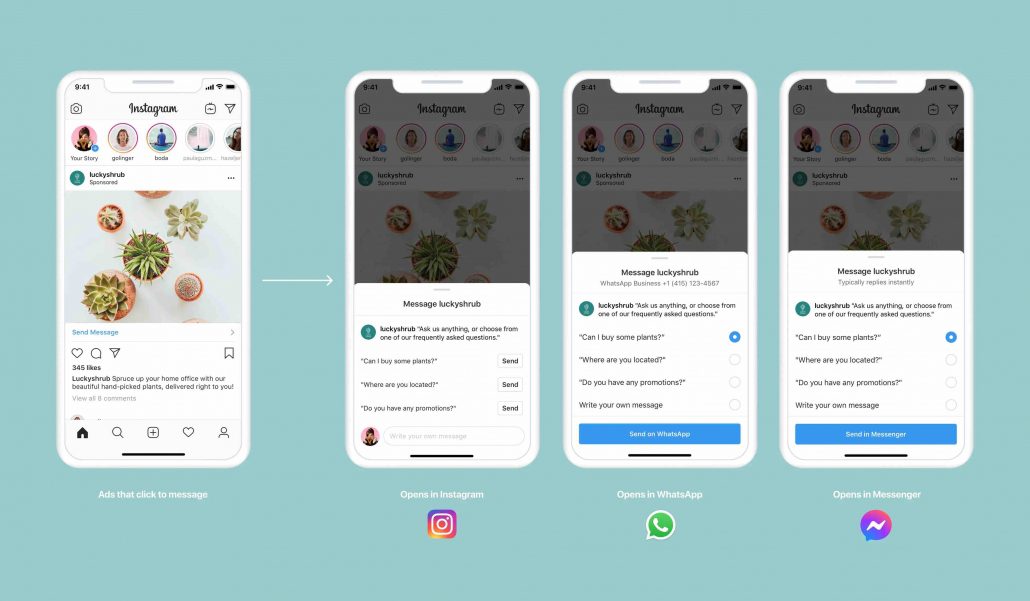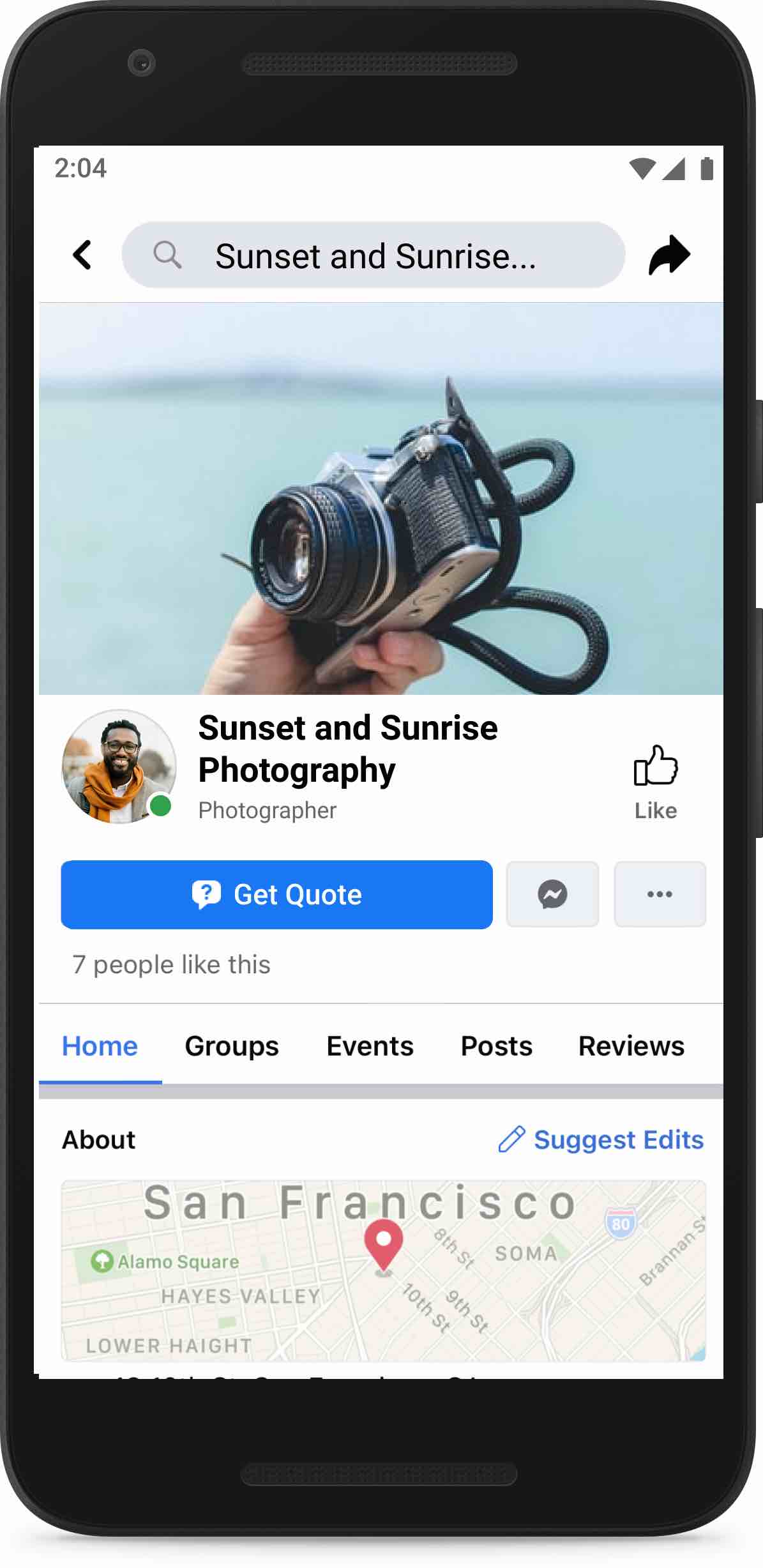A new nationwide survey conducted by the Pew Research Center shows that YouTube and Facebook may still be the most widely used social media platforms by adults, but TikTok is continuing to grow significantly.
Based on the survey results, YouTube and Facebook remain the most widely used social media platforms across the US. More than three-fourths of American adults (87%) reported using YouTube, with 68% saying they used Facebook.
Most other platforms have retained approximately the same level of usage from past surveys, with the largest (Instagram) seeing use from around 50% of adults.
TikTok, however, saw a jump from 21% of US adults using it in 2021 to 33% of adults in the latest survey.
Age Continues to Influence Social Media Use
Just as in past surveys, Pew found notable differences in social media use depending on age.
For example, adults under the age of 30 were significantly more likely to say they used Instagram, Snapchat, and TikTok compared to older adults.
YouTube and Facebook, however, were more likely to be used by adults of all ages – leading to their overall dominance. At the same time, Pew noted that both platforms were still more likely to be used by younger adults than older respondents.
Demographics Also Influenced Social Media Usage
- Along with age, the Pew survey identified notable differences in the demographics that used each platform:
- Instagram: More usage among Hispanic and Asian adults, women, and people with some college education.
- TikTok: Increased usage rates among Hispanic adults and women.
- LinkedIn: Most widely used among Americans with higher educational attainment.
- Twitter (now “X”): More likely to be used by those with higher household incomes.
- Pinterest: Still most popular among women.
- WhatsApp: Receives more usage by Hispanic and Asian adults.
Why It Matters
As a business, you must know where to reach your audience where they are already spending time. When scrolling social media, adults tend to be more likely to engage with branded content, connect with unfamiliar brands, and discover products that they will later purchase. By making sure you’re there when your ideal audience logs on, you can give yourself the best chance to turn strangers into followers and followers into customers.
For more insights you can use to target your audience on social media, check out the full Pew report here.

